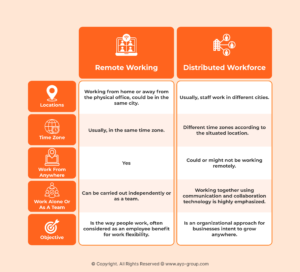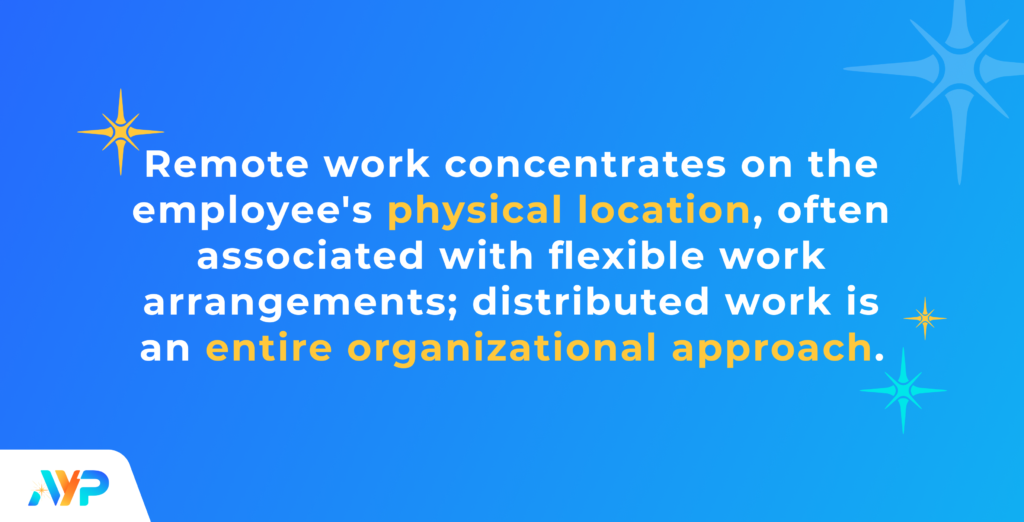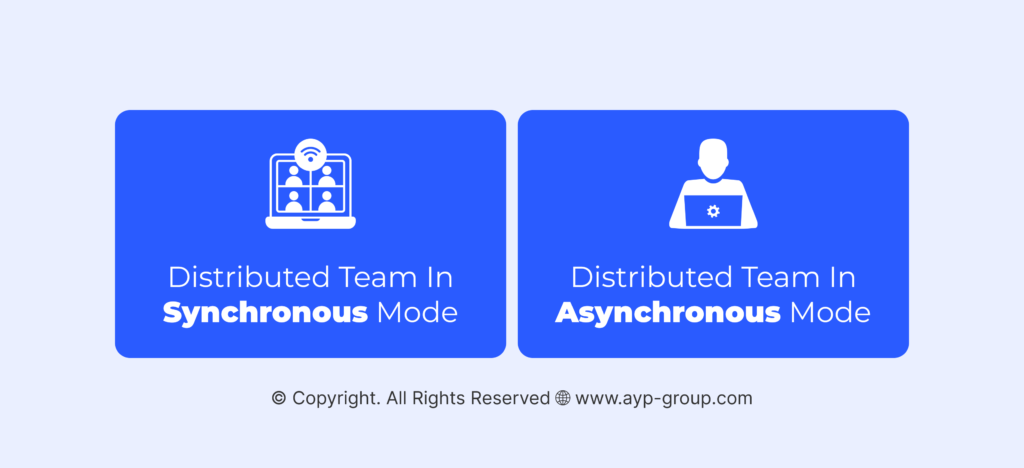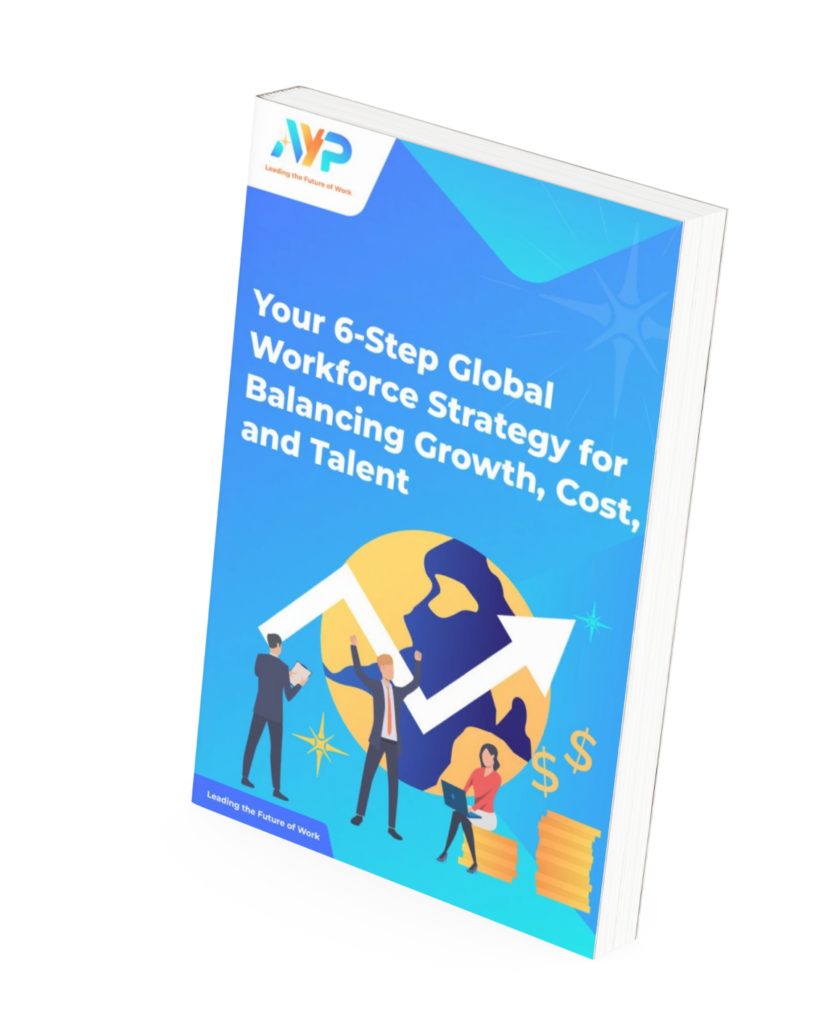Before discussing distributed workforce, let's clarify the differences between remote work and distributed work, which are frequently linked and overlapped.
Gartner defined remote work as a flexible working arrangement, often working from home, granted by an employer that allows the employee to work from a remote location away from the office or headquarters.
Remote work is often regarded as an employee benefit to promote work-life balance, access to greater work opportunities for remote workers residing in rural areas, reduce commuting costs, and save traveling time.
The policies governing the use of equipment, network security, and performance expectations are often explicitly explained since a work environment for remote workers is absent.
However, it is notable that remote working can be temporary or permanent, frequently or infrequently. All of the employees technically still work for the same company and perform the same tasks required, like working in an office.
1. Working remotely vs. working in a distributed team
"Remote working emphasizes mainly the location away from the office, but distributed workforce emphasizes more on a geographically dispersed workforce."

Generally, the two most significant differences are how the job is organized and how geographically dispersed the team members are located.
Remote work is usually an employee benefit from the company for workers to enjoy work flexibility and increase productivity from concentration work.
On the other hand, setting up a distributed team will primarily benefit companies wishing to expand globally, where their clients could be anywhere worldwide.
Since the distributed team is scattered in different locations, they work in different time zones and may or may not work remotely if an office space or face to face interaction is required according to the business nature.
A distributed team requires collaboration tools and often relies on video conferencing to communicate between different groups and headquarters. Hence, remote working is one of the best options for enabling and accelerating distribution work growth.
"The distributed workforce model is a broader business model with geographically dispersed employees and customers."

2. Digital capabilities determine the success of a distributed workforce
75% of businesses that take advantage of distributed enterprise benefits will experience revenue growth of 25% quicker than their competitors, according to Gartner's research.
Employers with a "digital first and remote first" mindset often benefit most from allowing employees to work from anywhere.
For instance, Salesforce advocates "Work from anywhere" by providing employees with flexible, fully remote, or office-based working options; this was accompanied by the company's decision to discontinue leasing a 325,000 square feet office space in San Francisco 1
Similarly, Pinterest followed the path by paying an 89.5 million cancellation fee to scrap their plans to build a massive 490,000 square feet office in San Francisco.
By providing employees with low-code tools and appropriately upskilling them in different experience approaches, working from anywhere distributed workforce saves the company a massive leasing fee. In addition, they are achieving better scoring in their DEI initiative.
A diverse workplace avoids stereotype recruitment according to the company's image.
Nevertheless, the criteria for establishing a successfully distributed workforce will require substantial digital enablement.
Gartner advises that the core capabilities will need to include the following:
- Cloud platforms
- Integration of data and security system
- Rapid deployment of customer and employee-facing applications.
3. Distributed workforce model: synchronous or asynchronous?
We know that digital capabilities and tech-savvy are the top criteria that enable a distributed team to be successful. Since each unit is isolated and operated in different locations, communication needs to be asynchronous.
All documentation should be centralized and allow stakeholders to access the information anytime.
On the other hand, a distributed workforce can operate in different time zones according to geographical locations, so a synchronous working method must be in place; this is especially crucial if the business nature requires the team members to communicate and solve problems in real time.
Hence, a distributed organization will need to balance both collaboration modes to unlock employees' capabilities. Gartner advises that a deep understanding of the employees' unique personalities and work requirements will help develop the appropriate model.
The model should change simultaneously according to the employee and business needs.

4. HR functions & challenges
There are a few key challenges that HR will face in setting up and managing a distributed workforce:
Hiring and Onboarding: hiring a distributed team, especially setting up a remote company, can be challenging if the company lack of digital tools for virtual interviews and providing virtual onboarding programs.
Managing performance: A different set of metrics that constantly measures the performance of remote workers can be more complex to implement than measuring in-person employees' productivity and performance.
Communication and collaboration: Using the right tools and processes will determine how successfully remote teams can collaborate well and shape a positive company culture. Regarding HR roles, a digitalized and automated payroll system helps mitigate the risk and reduce approximately 70 to 80% of repetitive tasks.
Ensuring compliance: Managing a distributed team means that HR must understand more than one country's labor law due to owning different local entities. HR must be equipped and familiar with various labor laws to ensure compliance.
Learn how workers' misclassification can put you at risk of violating the laws.
5. Working with an EOR : Hire global talents from anywhere
Managing a distributed team means that HR must understand more than one country's labor law due to owning different local entities. HR must be equipped and familiar with various labor laws to ensure compliance.
Small and medium enterprises often face the hurdle of scaling fast and effectively. There is a misconception that the risk of transforming into a distributed company outweighs the potential gains. Here is where a company like AYP can provide EOR solutions to mitigate all legal worries and compliance risks.
To overcome these challenges, HR professionals must adapt to new strategies according to the team's unique needs; this includes the combination of new policies, procedures, and technology tools. So, how can an EOR like AYP help?
- We have impacted over 500,000 lives in improving their HR processes by providing innovative digital solutions.
- We have helped companies expand confidently with a portfolio of business expansion to more than 17 countries.
- We have over 100+ legal experts to mitigate your compliance risks and act as your legal employer.
- Automatize payroll in more than 130 currencies and digital onboarding your team in minutes.
- Digital onboarding of your new hires seamlessly through a collaboration platform.
Are you ready to see how we can help to accelerate your business growth WITHOUT setting up your legal entities?
Share your business plan with us and get a FREE consultation on how to hire anyone from anywhere.
Featured Content
1. Effective Ways to Engage Remote Employees
2. 3 Workforce Trends To Pay Attention To in 2023
3. Overcoming the Challenges of Remote Work



